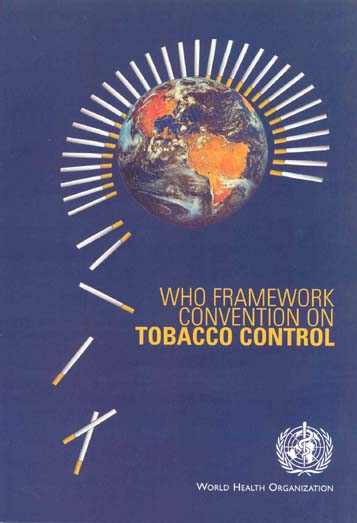 December 10, 2009 - The World Health Organisation (WHO) on Wednesday, December 9th called for more protection for non-smokers, after new data showed that just five percent of the world's population benefited from public smoking bans.
December 10, 2009 - The World Health Organisation (WHO) on Wednesday, December 9th called for more protection for non-smokers, after new data showed that just five percent of the world's population benefited from public smoking bans.
Some 154 million more people lived in areas covered by smoke free laws in 2008, a WHO report showed. That brought the total proportion of the world's population covered by smoke-free laws to only 5.4 percent, three years after international tobacco control measures introduced the requirement.
The WHO estimates that some 600,000 non-smokers die prematurely every year as a result of passive smoking (environmental tobacco smoke, ETS, sidestream smoke, involuntary smoking), or exposure to secondhand smoke SHS).

Bans on smoking in public places were enforced in 17 countries, with Colombia, Djibouti, Guatemala, Mauritius, Panama, Turkey, and Zambia joining the list in 2008.
"Although this represents progress, the fact that more than 94 percent of people remain unprotected by comprehensive smoke-free laws shows that much more work needs to be done," said WHO Assistant Director General for non-communicable diseases Ala Alwan.
"There is no safe level of of exposure to secondhand smoke. Therefore action is needed by governments to protect their people," he added. (2006 Surgeon General's Report—The Health Consequences of Involuntary Exposure to Tobacco Smoke)
Of the world's 100 most populous cities, just over a fifth, or 22 are smoke free according to the WHO. The report also revealed that 93 countries so far insist on smoke free hospitals.
"This is very worrisome data in that only half of the world's population is living in cities where health care facilities are smoke free," said Armando Peruga, manager of the WHO's Tobacco Free Initiative.
Overall tobacco use kills more than five million people a year largely due to cancers and heart trouble, a death toll that could rise to eight million by 2030 at the current rate, according to the report.
Some six trillion cigarettes were produced in 2007, according to the WHO.
"The tendency today is that the proportion of people smoking is going down but the absolute number is increasing," due to population growth, Peruga told journalists.
Smoking also appears to be more popular among young women, according to the UN health agency. "In half the world girls are smoking at the same rate as boys, which is very different from what you see in adults," said Peruga.
The 2005 WHO Framework on Convention on Tobacco Control advocates bans on tobacco advertising and sponsorship, tax increases on tobacco, explicit warnings on cigarette packs as well as laws on smoking in public places and help for those who want to quit smoking.
Reference: WHO warns of slow take up in public smoking bans, Agence France-Presse (AFP) - The Independent.co.uk, 12/10/2009.



0 comments:
Post a Comment